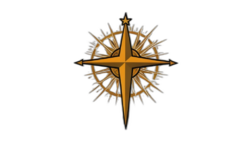Novemberism
| Novemberism Church | |
|---|---|
 | |
| Abbreviation | NC |
| Classification | Mainline Protestant (with various theological and doctrinal identities, including Anglo-Catholic, conservative christianity and Evangelical) |
| Orientation | Anglican |
| Scripture | Holy Bible |
| Theology | Anglican doctrine |
| Governance | Blue Council |
| High High Patriarch | High Patriarch Lucius van den Berg |
| Language | English, Pelzian, Old Pelzian |
| Headquarters | Great Church of Zwanport |
| Origin | Fallholt - Pelz |
| Congregations | 9.5 Million |
| Members | 9,584,791 active members (2022) |
| With Faith We Pray | |
Novemberism, or Novemberisme, in Pelzian, is the dominant faith accepted in the Holy Land by the Pelzian people across what is considered ancient Pelzian territory. Novemberism has always been the root of ideologies that have originated from Pelz. “Novemberism” etymology stems from the events of November of 1424, when the early Pelzians gathered in the capital took the monumental step to set aside ecclesiastical differences and reform the Church under the same governing body. Ever since the religion has been the dominant governing religion of Pelz and had the biggest impact upon the governing body of the country.
History
The Recorded History of Pelz traces the origins of Novemberism back to the 1320s through ancient scriptures attributed to Jacob The Wise, a revered figure among believers of Novemberism. His teachings laid the foundational structures of the faith, which were further elucidated upon in textbooks recovered in later centuries, providing invaluable insight and vision for Novemberism. The Testaments Of The Jacob, attributed to him, serve as a cornerstone for understanding and preaching the religion, particularly during the late 1400s when Pelz formally embraced Novemberism as a unifying force.
- ↑ "Journal of the General Convention of the Protestant Episcopal Church in the United States of America" (PDF). The Episcopal Church. 1940. p. 288.